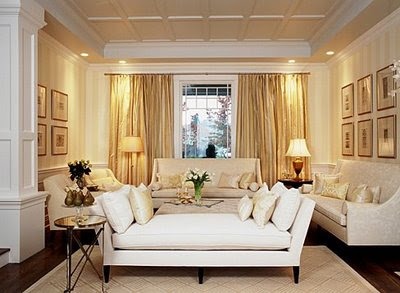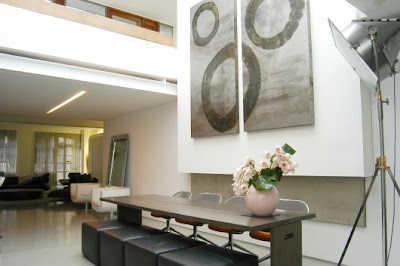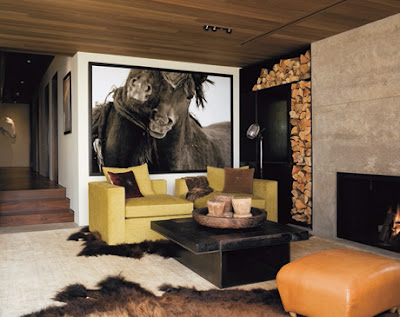I am frequently called up-on to help clients who have art and photography collections. They are concerned that their collection doesn't "fit" their style and want help with placement and sorting through what they have. Matching art to the decor is certainly possible but not desirable or even realistic. I prefer working with elements from the art and allowing it to flow in each space. Art can either stand alone or be incorporated
into a space. When updating a room, I often use a collection of art and photography as inspiration to select the style, colors, and scale of pieces to be used. For those of you who like to follow guidelines, here are a few that might help in selecting art and decor:
into a space. When updating a room, I often use a collection of art and photography as inspiration to select the style, colors, and scale of pieces to be used. For those of you who like to follow guidelines, here are a few that might help in selecting art and decor:
 1) Take cues from the art to being into the room. A monochromatic piece may invite subtle decor with muted colors and a calming influence. When you keep the colors in the room and the art in similar hues, the overall feel is elegant (see left). I have seen the difference between rooms devoid of similar colors and those whose accents mirror what is in the art. Spaces with colors that repeat in the room feel cohesive and actually draw attention to the art. If your art is what you love, make it the focal point of a room and everything else should be kept monochromatic, simple in line and subtle in detail.
1) Take cues from the art to being into the room. A monochromatic piece may invite subtle decor with muted colors and a calming influence. When you keep the colors in the room and the art in similar hues, the overall feel is elegant (see left). I have seen the difference between rooms devoid of similar colors and those whose accents mirror what is in the art. Spaces with colors that repeat in the room feel cohesive and actually draw attention to the art. If your art is what you love, make it the focal point of a room and everything else should be kept monochromatic, simple in line and subtle in detail.2) Combine similar styles of art in the same space. That may mean that the composition is similar - all landscapes or all abstract art - and keep pieces by the same artist together. As in the living room above, the transitional furnishings are reflected in simple lines in the architectural prints. Framing them all the same keeps the focus on the art rather than a decorative frame.
 3) Highlight your art with lighting. That doesn't mean throwing an eyeball fixture onto each piece. Consider ambient light from skylights (as in the image to the right), interesting ways to use accent lighting like LED ropes embedded in molding, dropped lights to feature a specific work, and back-lighting around a frame or canvas.
3) Highlight your art with lighting. That doesn't mean throwing an eyeball fixture onto each piece. Consider ambient light from skylights (as in the image to the right), interesting ways to use accent lighting like LED ropes embedded in molding, dropped lights to feature a specific work, and back-lighting around a frame or canvas.
4) Repeat line and shape in the art and the room. If your art has bold sweeping curves, consider using it in a space with curved tables, sofas, and area rugs. Marry styles. If you have bold, modern art, consider using pieces in the same style in your decor.
 5) Place furniture auspiciously to highlight art. Use
5) Place furniture auspiciously to highlight art. Usetables, benches, seating groups and other pieces
to create a vignette as in this framed black and white photo behind a vibrant yellow sofa. The goal is to have the art and furniture complement
one other. Don't hesitate to use the architecture of the room to guide you; if you have niches, vaulted ceilings, large wall expanses, and unusual window or wall details, work them into your space plan and then use that plan to position your artwork.